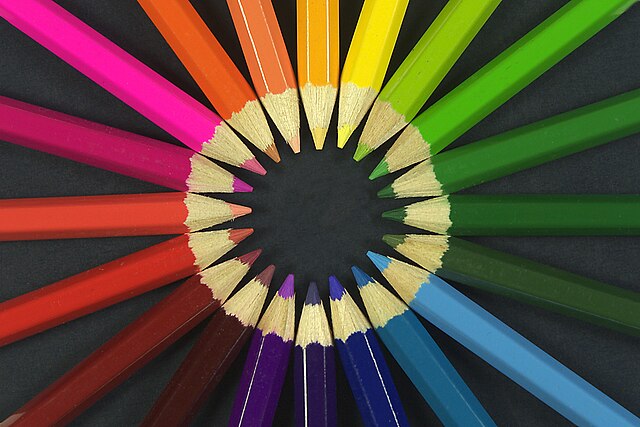Complementary colors are pairs of colors which, when combined or mixed, cancel each other out by producing a grayscale color like white or black. When placed next to each other, they create the strongest contrast for those two colors. Complementary colors may also be called "opposite colors".
A Boutet color circle from 1708 showed the traditional complementary colors; red and green, yellow and purple, and blue and orange.
The color wheel designed by Johann Wolfgang von Goethe (1810) was based on the idea that the primary colors yellow and blue, representing light and darkness, were in opposition to each other.
Impression, Sunrise by Claude Monet (1872) featured a tiny but vivid orange sun against a blue background. The painting gave its name to the Impressionist movement.
Oarsmen at Chatou by Pierre-Auguste Renoir (1879). Renoir knew that orange and blue brightened each other when put side by side.
Color or colour is the visual perception based on the electromagnetic spectrum. Though color is not an inherent property of matter, color perception is related to an object's light absorption, reflection, emission spectra and interference. For most humans, colors are perceived in the visible light spectrum with three types of cone cells (trichromacy). Other animals may have a different number of cone cell types or have eyes sensitive to different wavelength, such as bees that can distinguish ultraviolet, and thus have a different color sensitivity range. Animal perception of color originates from different light wavelength or spectral sensitivity in cone cell types, which is then processed by the brain.
Colored pencils
Twelve main pigment colors






